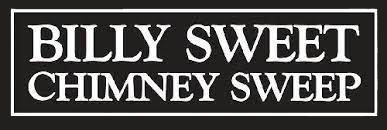by Billy Sweet | Aug 13, 2015 | Chimney Video Inspection
During a routine chimney inspection, it is difficult to understand fully what takes place as your chimney sweep explores the inner and outer cracks and crevices of your fireplace. Here at Billy Sweet Chimney Sweep, we don’t depend solely on a flashlight and a gut feeling like many sweeps do. We use the most updated technology available: a full video inspection of the innards of your chimney to ensure it is in the best shape it can be in for the upcoming fall and winter seasons.
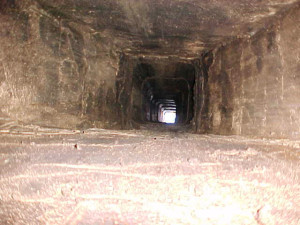
Why is a video inspection needed?
According to the National Fire Protection Association (NFPA) and the Chimney Safety Institute of America (CSIA), a level one inspection of a chimney requires not much more than common tools and a flashlight to look at the basic structure and condition of your chimney. It is a straightforward exam at first glance. Looking for cracks that may have developed due to temperature and water level fluctuations in the masonry, as well as any excess condensation or creosote buildup is all part of the normal examination. The reason for a video inspection is simple: The camera can look at areas of your chimney that a flashlight, and therefore human eyes, are not able to. Using the Chim-Scan camera system and Wohler Vis2000-Pro, cracks and leaks, as well as presence of excess soot or other debris, are easily identified and addressed, whereas a flashlight’s beam may not make fully aware the issue.
When should I get it inspected?
Now is the time. The status of your chimney is very important to us and it is necessary to get it swept and inspected before it becomes starts being of use in the cooler months. Leaving buildup and cracks from the previous seasons can be a safety hazard as well as harmful to your chimney’s lifespan in the long-term.
Regardless of the nature of the appointment with us, we will inspect every chimney with our camera system because we want everyone to have peace of mind when it comes to the safety of the entire family. Testing for carbon monoxide is a standard practice for us, and one that we will do free of charge at every inspection. We care about your safety and we will go the extra step, every time.
by Billy Sweet | Jul 26, 2015 | Winter Masonry Damage
As summer begins to quickly fade away, it’s time now to bring attention to your chimney before winter is upon us. Among all the repairs and other activities associated with the warmer summer months, it is hard to think about preparing the upcoming winter. That feeling is completely understandable! However, there are a few reasons why you should focus some attention on your chimney at this time of the year.
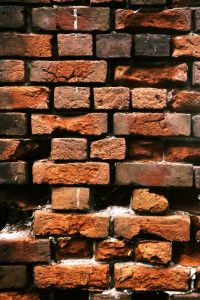
Why should I have to get it repaired?
Your chimney, built in the masonry style, is built of porous materials such as concrete, brick, mortar, and stone. Think of it similar to a sponge in the way they hold water. Though they appear to stand the test of time, without proper care they can begin to crack as the processes of freezing and thawing expands, and then contracts, the masonry. Over time this leads to bricks loosening, and eventually the entire chimney will collapse. As you can tell, winter can be very hard on your chimney. With the addition of intense use of your fireplace during those months, it can amass a variety of problems… that are then ignored over the summer months as it goes unused. It is a vicious cycle!
Besides the expansion and contraction that occurs when water freezes and then thaws in the masonry, water also causes a lot of damage and deterioration to any metal or wood materials that it accesses on the interior of your chimney and in your fireplace such as:
- Dampers
- Flue lining system
- Proximal wood flooring and wall coverings
- Fireplace accessories
What can I do about it?
Chimney Caps:
Preventing water from damaging your chimney is absolutely essential for the long life of your chimney. Well-designed chimney caps are made of enduring, reliable material that can resist corrosion as well as keep birds and other animals out and off of your chimney. Though there are options that only provide partial coverage, a full coverage chimney cap is an investment that will provide the most protection long-term.
Tuckpointing:
For masonry that does lose mortar during the hard winter months due to temperature fluctuation, tuckpointing is a relatively simple process of tucking mortar into damaged areas. Not only does it reinforce the structure of your chimney, but it is more aesthetically pleasing as well.
Chimney Crown Replacement/Repair:
The crown is absolutely essential in directing water away from the flue and to the edge of the chimney so that it won’t erode any mortar or brick. If your crown is cracked or damaged in any way, the rate of chimney degradation gets increasingly higher.
Chimney Waterproofing:
We have learned that water is very damaging to both the exterior and interior of your chimney. Using a waterproofing treatment is a preventative measure against many of the above issues, as well as allows your chimney to release water vapors that it contains in the masonry while keeping additional water out.
Make your appointment online with us and learn more about your chimney at billysweetchimneysweep.com.
by Billy Sweet | May 3, 2015 | Chimney Masonry Maintenance
There are masonry fireplaces and chimneys and there are pre-fab fireplaces and chimneys. Masonry fireplaces and chimneys are made for mortar and bricks, block, or stone, while pre-fab fireplaces are made of metal and steel. Billy Sweet Chimney Sweep has specialized in maintaining chimneys and fireplaces for over 30 years and reiterates the recommendations of the Chimney Safety Institute of America (CSIA) and Hamon Corporation.
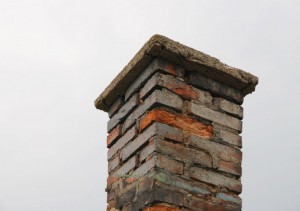
The CSIA explains why proper maintenance of masonry chimney is so important. “All masonry chimney construction materials, except stone, will suffer accelerated deterioration as a result of prolonged contact with water. Masonry materials deteriorate quickly when exposed to the freeze/thaw process, in which moisture that has penetrated the materials periodically freezes and expands causing undue stress. Water in the chimney also causes rust in steel and cast iron, weakening or destroying the metal parts. Read more at the CSIA’s website.
Chimneys in New England are exposed to many months of constant freezing and thawing, along with exposure to rain, and intense heat, even lighting. Damage to your chimney structure means that the chimney cannot function properly and therefore exposes homeowners to fire risks, seepage of toxic gasses. Damaged masonry weakens the integrity of your home’s structure. Water causes more damages to chimneys than fires. It can cause both interior and exterior damage.
Out of Sight–Out of Mind
With such great risk caused by masonry damage, why is the proper maintenance of masonry chimneys so often overlooked by homeowners? Out of sight out of mind…until there is a problem.
Yearly inspections are the first step to maintaining your masonry chimney. During the inspection the chimney technician will look for cracks, missing bricks or blocks, water staining, and deterioration. If there are any signs of weakening, gaps, or damage, repairs can be made before small cracks become major issues.
During the inspection special attention will be paid to ensuring the chimney crown, also known as the chimney wash, is fully functional. As the CSIA explains in the homeowner’s resources section of their website, “Most masonry chimneys are built with an inadequate crown constructed from common mortar mix that is not designed for years of weather abuse without cracking, chipping or deteriorating. A proper chimney crown should be constructed of a Portland cement-based mixture and cast or formed so it provides an overhang projecting beyond all sides of the chimney by a minimum of two inches. The flue liner tile should also project above the crown a minimum of two inches.
When masonry issues are found, proper repairs should be done by a trained professional. The outside of the chimney needs to be thoroughly cleaned and all masonry repairs done before any waterproofing materials are used. Your chimney professional will know the best waterproofing agents to use to seal out water. Homeowners should not attempt to make the masonry or waterproofing repairs themselves and using paint or clear sealants instead of professional products will cause further damage by trapping the wetness rather than elevating it.
Commercial Masonry Chimneys Need Care Too.
From an industrial point of view, when it comes to maintenance, the chimney stacks at commercial and industrial sites are just as overlooked as they are on residential sites. Hamon Corporation is a group of international companies dedicated to providing “high quality innovative solutions to meet customer needs for energy efficiency and a clean environment”. Hamon urges plant and commercial maintenance teams to recognize that proper maintenance means “extended life for chimney and stacks. These passive structures are often over looked in maintenance schedules.” In an article by Arun K. Bhowmik from Hamon Custodis, Bhowmik cautions, “Chimneys are basically passive structures with few mechanical parts that require maintenance attention to keep them functional. Because of this, it is easy to overlook them – but doing so can be costly.” He goes on,” Chimneys and stacks have only one function: dispersing flue gas into the atmosphere. In the process of fulfilling that function, (chimneys) are exposed to harsh environments, both inside and outside. Flue gas, with its abrasive and corrosive characteristics, can damage the structural materials of the chimney or liner. Climatic conditions, ranging from high winds to extreme cold, place extreme stress on the structure.” To read his entire article on proper industrial chimney maintenance, click here.
When is the last time you had your masonry inspected? Are you guilty of the out of sight out of mind mentality? Don’t delay any longer; contact Bill Sweet Chimney Service today.
by Billy Sweet | Mar 27, 2015 | Carbon Monoxide Poisoning
Carbon monoxide is a dangerous gas that can cause poisoning when you are exposed to it. It is a particularly dangerous threat because it is odorless, colorless and otherwise undetectable to the naked eye. When you are exposed to carbon monoxide you inhale the fumes, which prevents oxygen from reaching your organs. The most important thing you can do to protect you and your family from carbon monoxide dangers is to prevent exposure in the first place.
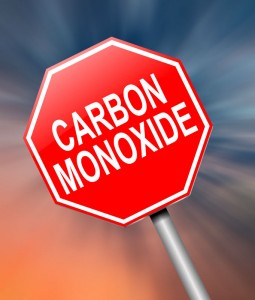
How Does Carbon Monoxide Poisoning Occur?
Carbon monoxide poisoning occurs in several ways, but in residential homes the most common way is through the misuse of heating appliances. In homes where wood-burning heating appliances are used, by-products can be left behind in chimneys. Soot, animal debris and flaked off masonry can all lead to dangerous toxins being release inside the home. Additionally, homes that aren’t well-ventilated can lead to carbon monoxide poisoning because there isn’t efficient air-flow while heating appliances are in use. Lastly, misuse of heating appliances can lead to poisoning, especially if inappropriate materials are being used or the operator doesn’t understand all components of the appliance.
Damaged Chimneys Can Lead To Carbon Monoxide Dangers
In homes where chimneys are older or have not been properly maintained chimneys can become blocked or rusted and this can result in carbon monoxide and other toxins being released into the air. Backdrafting, a common occurrence when chimney dampers and flues are not operating properly, can also lead to carbon monoxide poisoning.
Symptoms Of Carbon Monoxide Poisoning
If you suspect you or someone in your home is suffering from carbon monoxide poisoning, look for these common symptoms:
- Headache
- Weakness
- Dizziness
- Confusion
- Loss of vision
- Loss of consciousness
While these symptoms may seem subtle, they are life threatening. If you see any of these symptoms, remove everyone from the area and get emergency medical care immediately.
Luckily for homeowners, there are ways to prevent carbon monoxide poisoning including:
- Invest in a carbon monoxide detector that will alert you if the dangerous gas is detected.
- Never use stand-alone heating appliances like space heaters in small, enclosed areas.
- Only use wood-burning appliances in well-ventilated areas.
- Make sure you understand how to operate ALL components of your chimney before you light your first fire.
- Only burn appropriate, chemical and paint free wood in your wood-burning appliance.
- Inspect your heating equipment before use to make sure it is operating properly.
The single most important thing you can do as a homeowner is have your chimney professionally swept and inspected at least once a year. Hire a professional and experienced chimney sweeping company like Billy Sweet Chimney Sweep serving the Boston, North Shore and Portland areas to inspect, repair and if necessary, rebuild your chimney. Having an airtight chimney with a working damper and flue is the best way to prevent carbon monoxide build-up from your heating system. Our certified chimney sweeps are ready to inspect your chimneys and recommend any necessary add-ons or repairs. Contact the best in chimney sweeping to keep your home free of carbon monoxide dangers.
